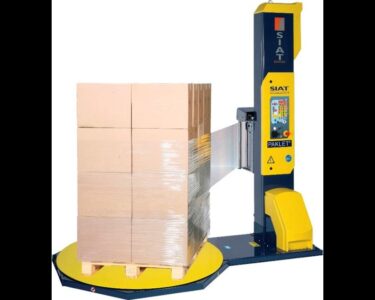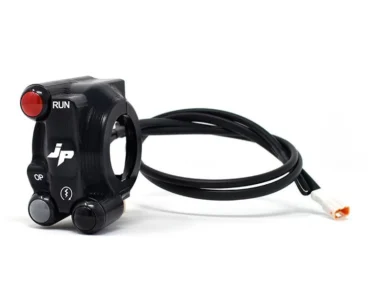Band saws are crucial tools in the world of woodworking, home improvement, and DIY projects. With the ability to make precise cuts through various materials, they have become a staple in workshops across the globe. However, like any other power tool, band saws can face issues, particularly with their motors. Understanding these problems and knowing how to troubleshoot them is essential for maintaining a smooth and efficient workflow.

In this guide, we will explore the ins and outs of band saw motors, identify common problems, and provide practical solutions to keep your saw in top shape. Whether you’re a seasoned woodworker or a DIY enthusiast, this comprehensive guide will help you tackle motor issues with confidence.
Table of Contents
Introduction to Band Saws
Band saws are versatile cutting tools designed to handle a wide range of materials, including wood, metal, and plastic. They consist of a continuous band of toothed metal that rotates around wheels to create precise cuts. Used in everything from intricate scrollwork to resawing lumber, band saws have become an indispensable tool for woodworkers and DIY enthusiasts alike.
The motor is the heart of the band saw, driving the blade and enabling it to cut through materials with ease. Without a properly functioning motor, your band saw will not perform as expected, leading to frustration and delays in your projects.
Understanding the Motor
The motor in a band saw is responsible for converting electrical energy into mechanical motion, powering the blade to make clean and accurate cuts. Most band saws use electric motors, which can vary in power from a few hundred watts to several horsepower, depending on the saw’s size and intended use.
Knowing the basic components of your band saw motor can help you diagnose and fix issues more effectively. Key parts include:
- Stator: The stationary part of the motor that generates a magnetic field.
- Rotor: The rotating part that interacts with the magnetic field to create motion.
- Commutator: A switch mechanism that reverses the direction of current flow in the rotor.
- Brushes: Conductive components that transfer electricity to the rotor.
Common Band Saw Motor Issues
Motor problems can arise from various sources, including wear and tear, electrical issues, and lack of maintenance. Here are 14 common band saw motor issues you might encounter:
- Motor Won’t Start
- Motor Overheating
- Unusual Noises
- Motor Stalling
- Reduced Cutting Power
- Vibration and Shaking
- Electrical Smells
- Tripped Circuit Breakers
- Inconsistent Speed
- Excessive Sparking
- Motor Running in Reverse
- Frequent Motor Burnouts
- Broken or Worn Brushes
- Damaged Windings
Understanding these issues is the first step in troubleshooting and resolving them effectively.
Troubleshooting Steps
Motor Won’t Start
If your motor refuses to start, it could be due to a faulty power switch, blown fuse, or disconnected wiring. Check the power source, ensure the switch is functioning, and inspect all connections for signs of damage.
Motor Overheating
Overheating can be caused by prolonged use, poor ventilation, or an overload. Allow the motor to cool down, ensure proper ventilation, and avoid pushing the saw beyond its capacity. Regularly clean the motor vents to prevent dust buildup.
Unusual Noises
Grinding, squealing, or rattling noises often indicate issues with bearings, loose components, or debris inside the motor. Inspect and replace worn bearings, tighten any loose parts, and clean out any foreign objects.
Motor Stalling
Stalling can result from a dull blade, incorrect tension, or electrical problems. Sharpen or replace the blade, adjust the tension according to the manufacturer’s recommendations, and inspect the electrical connections.
Reduced Cutting Power
A loss of cutting power may be due to a worn-out motor, low voltage supply, or improper blade installation. Check the motor’s condition, ensure a stable power supply, and reinstall the blade correctly.
Vibration and Shaking
Excessive vibration can be caused by an unbalanced blade, loose mounting bolts, or misaligned pulleys. Balance the blade, tighten all bolts, and align the pulleys to reduce vibration.
Electrical Smells
A burning smell often indicates overheating, insulation breakdown, or electrical short circuits. Turn off the saw immediately, allow it to cool, and inspect the motor for any signs of damage.
Tripped Circuit Breakers
If your circuit breaker trips frequently, it could be due to an electrical overload, short circuit, or faulty wiring. Reduce the load on the circuit, inspect for shorts, and repair any damaged wiring.
Inconsistent Speed
Inconsistent motor speed can result from a faulty variable speed control, worn brushes, or voltage fluctuations. Test the speed control, replace the brushes if needed, and ensure a consistent power supply.
Excessive Sparking
Sparking inside the motor is often caused by worn brushes, dirty commutator, or loose connections. Clean the commutator, replace the brushes, and secure all connections.
Motor Running in Reverse
If your motor runs in reverse, it may be due to incorrect wiring or a faulty switch. Recheck the wiring connections and replace the switch if necessary.
Frequent Motor Burnouts
Frequent burnouts can occur from overloading, poor ventilation, or using the wrong voltage. Avoid overloading the saw, maintain proper ventilation, and use the correct voltage as specified by the manufacturer.
Broken or Worn Brushes
Worn brushes can cause poor motor performance or failure to start. Regularly inspect the brushes and replace them when they are worn down.
Damaged Windings
Damaged windings can lead to reduced efficiency or complete motor failure. Inspect the windings for signs of burns or breaks and consider rewinding the motor if necessary.
Preventative Maintenance
Preventative maintenance is key to keeping your band saw motor in optimal condition. A regular maintenance schedule can help prevent many common issues and extend the life of your motor. Here are some essential maintenance practices:
- Clean Regularly: Dust and debris can accumulate inside the motor, causing overheating and other issues. Clean the motor and vents regularly.
- Inspect Wiring: Check electrical connections for signs of wear or damage and repair as needed.
- Lubricate Bearings: Proper lubrication reduces friction and wear on the motor bearings.
- Replace Worn Parts: Replace brushes, belts, and other components before they become a problem.
Conclusion
Maintaining your band saw motor is essential for successful woodworking and DIY projects. By understanding common motor issues and following the troubleshooting steps outlined in this guide, you can keep your saw running smoothly and efficiently.
Remember, regular maintenance is the key to preventing problems before they arise. By taking the time to care for your band saw motor, you’ll ensure it remains a reliable tool in your workshop for years to come.



